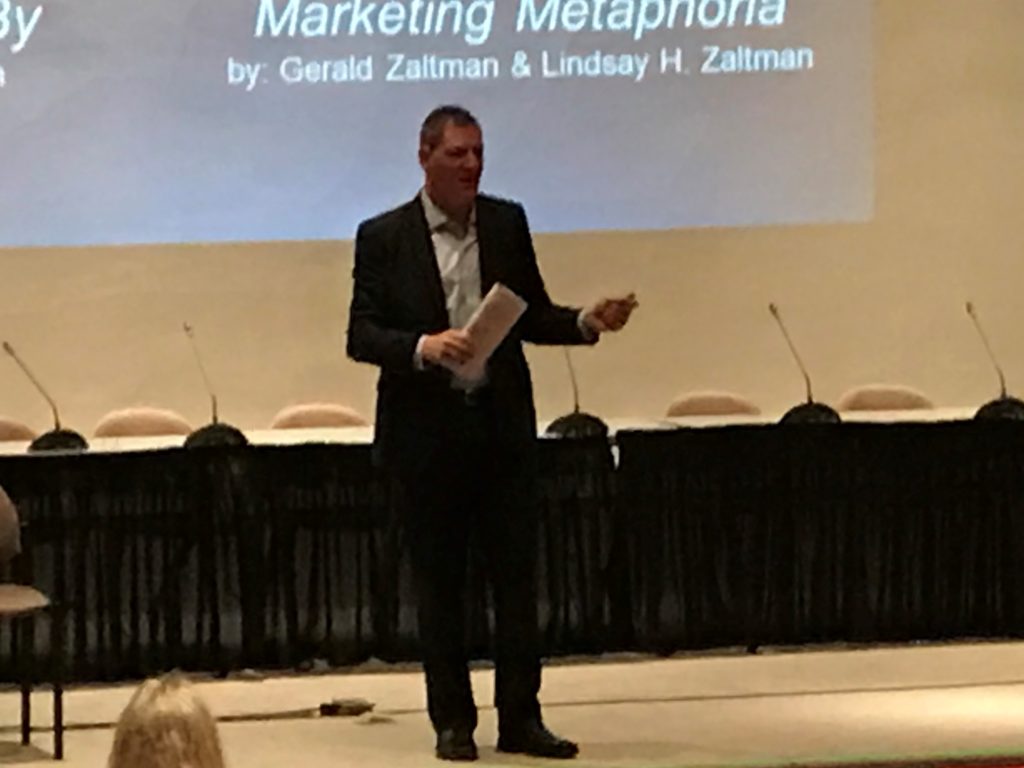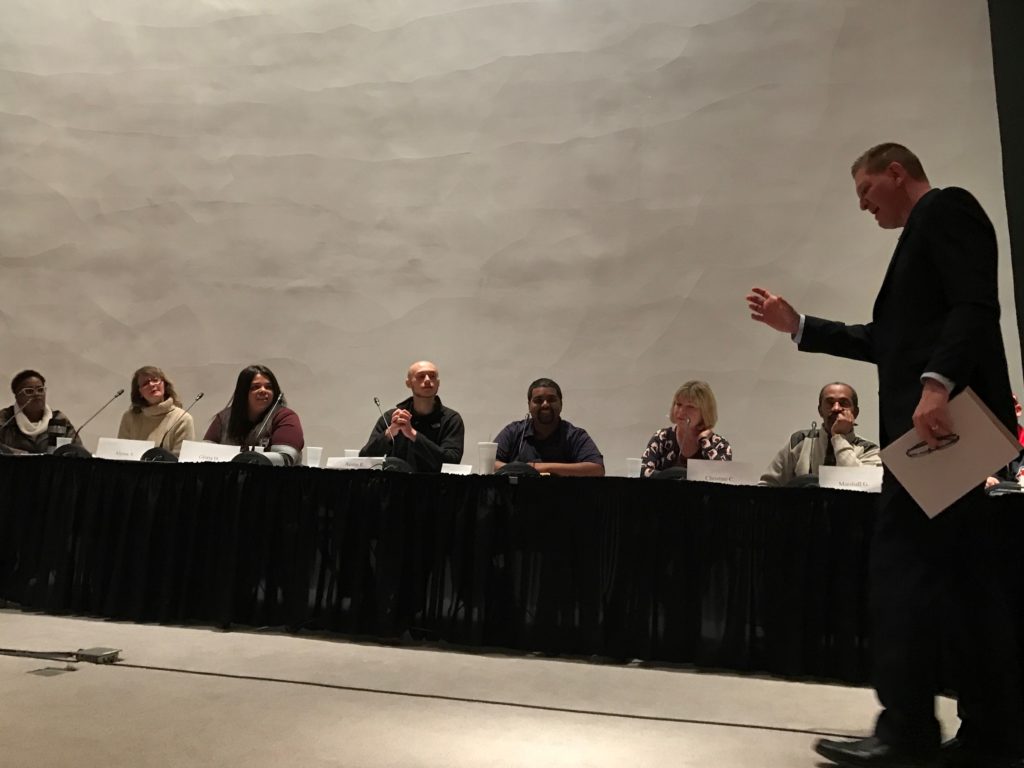A well-executed focus group can be one of the most important tools in a trial lawyer’s toolkit. When used properly, focus groups provide invaluable insights to trial lawyers. A focus group creates an environment where participants are free to give candid, meaningful thoughts about issues central to a case.
Focus groups are useful because they help us identify and highlight the best issues in our cases for use at trial, identify the weakest points in our case at the earliest opportunity, identify the good and bad characteristics of clients and witnesses, and test evidence and develop themes long before we set foot in front of a jury.
The purpose of a focus group is to help us present our cases in a more persuasive and effective way. But used improperly, focus groups can be detrimental. Focus groups can discourage us from pursuing a good case or provide us with a false sense of confidence about a bad case.
For these reasons, it is important that a focus group is conducted by the right person with these potential pitfalls in mind. The results of the focus group are only as good as the consultant.
That’s why it was such a pleasure to have Ken Levinson of Levinson & Stefani present a live focus group at the 2017 Cleveland Academy of Trial Attorneys Litigation Institute.
Recognized by Super Lawyers as one of the top 100 lawyers in Illinois, Ken is a graduate of Gerry Spence’s Trial Lawyers College and a member of the Trial Lawyers College Alumni Board, as well as the American Association for Justice. He is the author of the latest edition of Litigating Major Automobile Injury and Death Cases, published by AAJ Press/Thomson Reuters.
Ken is often invited to speak by AAJ and multiple state bar and trial lawyer associations. In addition to representing clients, Ken is frequently retained to create focus groups and assist lawyers throughout the country in the presentation of their case.
At the 2017 CATA Litigation Institute, Ken spoke on the importance of focus groups. Following his presentation, Ken conducted a focus group in front of a live audience of CATA members.
The focus group evaluated a nursing home wrongful death case . The case involves the death of an elderly woman who developed Stage IV pressure sores and a severe infection leading to her death after a few-week stay in a rehabilitation facility.
As any focus group, the participants were intended to be representative of members of our community and were diverse in age, race, occupation, and political affiliation. Also, an effort was made to select jurors who were assumed to be difficult for the case.
The participants had no connection to the case, the lawyers involved, or the legal community. They were paid a relatively nominal fee for their participation. The participants signed a confidentiality agreement requiring that they keep any facts of the case or focus group confidential. The focus group participants were recruited by nursing home abuse lawyers Michael A. Hill and William Eadie of Eadie Hill Trial Lawyers.
The demographic information for the focus group participants and Ken Levinson’s PowerPoint presentation are available at https://goo.gl/ibbRg0.
A focus group is not a trial. It is simply a day where people who are not lawyers tell us what they think about the case. Those in attendance saw firsthand the impact a focus group can have in clarifying issues and terms in a case, including issues as minor as the group’s divergent reactions to the choice of phrases “nursing home” versus “short-term rehab.”
As Levinson points out, “we always learn new things about our cases from focus groups.” According to Levinson, “preparing for a focus group properly forces you to know your case in plenty of time before trial. Our philosophy is to test, test and then test some more!” As a trial lawyer who presents each of his cases before multiple focus groups prior to trial, Ken Levinson’s words could not be more accurate.
Why Conduct a Focus Group?
There is no question that the more times we prepare our case for presentation before an audience of strangers, the better the presentation becomes at trial. Some of the key areas of importance for focus groups—many of which were discussed by Levinson—are below.
Probe Facts, Themes, and Opinions
Focus groups allow us to explore jurors’ attitudes on a deeper level. In many ways, focus groups are similar to voir dire where we have an opportunity to probe the opinions of regular people like those who will ultimately be deciding the fate of our case. It allows us to make a human connection and get past the initial knee jerk reactions of jurors and explore their true, underlying thoughts, beliefs, and opinions. Much of the voir dire in a particular case can be guided by the results we receive during our focus groups. Likewise, much of our actual voir dire in a given case can be practiced through conducting multiple focus groups.
It is important to remember that “testing trial themes and arguments at a focus group is always beneficial,” according to Levinson. This is because focus group participants will develop their own themes that resonate with them. Those organic themes are often more effective than themes created by a lawyer to fit that lawyer’s vision of the case. The themes expressed by the focus group then provide a framework within which to develop and present your case.
As Levinson notes, “some of the best discussions from focus group participants deal with facts that the lawyers did not previously find important.” This has certainly been true in our experience.
Focus groups provide a unique opportunity to test which facts are actually at issue. Our views of a case are often clouded by the fact that we are lawyers and roundtable cases primarily with other lawyers. As a result, we tend to view the importance of facts through the lens of their legal relevance and significance.
Jurors, however, have no reason to think this way. Something is relevant because it is important for any number of reasons, regardless of its legal significance. For example, our firm exclusively handles nursing home and medical malpractice cases. During focus groups, patient and family-member responsibility (“blame”) is a recurring issue.
The defense rarely comes out and directly blames a patient or family member. And while strictly speaking comparative negligence is almost never a viable affirmative defense in our cases, we’ve learned that it is something that jurors will consider regardless of whether there is a line item for it in an interrogatory or whether the defense ever directly points the finger at anyone. It is an issue that needs to be confronted.
To tackle this issue, we always have the mock jurors answer the question, “this would not have happened to me or my family member because . . .” This is also a line of questioning that we address directly during voir dire. During voir dire, this line of questioning can directly reveal where a juror falls on the spectrum of “personal responsibility” (i.e., tort reform) and “social responsibility.”
Define Legal Concepts
In law school we are taught to “think like lawyers.” Unfortunately, the people who will decide the outcome of your case have received no such training. This is problematic since jury instructions are filled with technical, legal jargon. No matter how many times we recite a jury instruction to a group of jurors, can we really be sure that they understand it without getting feedback from them?
Focus groups are a perfect opportunity to learn how jurors understand terms like “standard of care,” “proximate cause,” “conscious disregard,” “deliberate indifference,” or whatever legal phrase may be important in your particular case.
Even more important, focus groups can inform us which facts in our cases fit within their common understanding of those terms and phrases. Our nursing home cases almost always include a request for punitive damages. Gaining an understanding of how jurors understand these terms and phrases can be critical in presenting them in your case.
Define these phrases early and weave them through your presentation with confidence that they will be readily accepted by the jury.
Evaluate Trial Exhibits
Focus groups are a chance to test the effectiveness of trial exhibits, including any demonstrative exhibits. A focus group’s response to a piece of evidence can be eye opening to say the least.
In our practice, on more than one occasion we have thought that a certain piece of evidence would carry the day. In a recent nursing home wrongful death case, for example, the Medical Examiner had signed a death certificate after evaluating the body. The official cause of death was what we claimed. The location listed on the death certificate where the initial injury occurred was what we claimed. Moreover, the Medical Examiner was not being paid and certainly had no stake in the outcome of the case.
To say the focus groups’ response was counterintuitive is an understatement. Rather than enforce the Medical Examiner’s conclusion, the death certificate caused more problems than solutions. One focus group member went so far as to say that the death certificate was “sloppy,” “unreliable,” and the death certificate could not be accurate because the Medical Examiner did not perform an autopsy.
In that situation, it was obvious that the death certificate would not suffice; the Medical Examiner needed to testify; and there was a lot of cleaning up that needed to be done on direct. He did testify, and he carried the day, but the majority of the examination was guided by the concerns of the focus group. These issues and potential weaknesses would not have been known or addressed had it not been for a focus group.
Focus groups are also very useful for designing and presenting demonstrative exhibits. Trial lawyers commonly spend countless hours preparing opening statements, closing arguments, and impeccable direct and cross-examinations. When it comes to demonstrative exhibits, however, even very good trial lawyers frequently outsource their production and design to non-attorneys and then present those demonstratives repeatedly to jurors without ever testing their value with the anticipated audience. The last thing you want to do is overuse an exhibit that jurors don’t understand or, even worse, hurts your case.
On many occasions we simply ask the participants what type of chart, graphic, or illustration would help them better understand the case. In one complicated medical malpractice wrongful death case the defendant doctors testified in deposition about facts that went far beyond—and in some ways contradicted—their medical records. Rather than fancy illustrations or three-dimensional demonstratives, the focus group settled on a simple chart detailing what they believed was the theme of the case. One column detailing the signs, symptoms, and diagnoses listed in the medical records were labeled “before lawsuit” juxtaposed with all of the new information testified to in deposition in a second column labeled “after lawsuit.” This was a simple and effective way to expose the defense for what it was, a litigation tactic.
Evaluate Damages
An often overlooked value of focus groups is exploring damages. While in our experience using a focus group to reach a specific monetary number is rarely of any real use, focus groups are great at assessing which elements of damages are most important.
For example, in a wrongful death case, focus groups can be highly effective at clarifying what aspects of the relationship are most important and what stories, photographs, and videos are most powerful. These determinations guide the presentation of witnesses and evidence at trial.
When a plaintiff has multiple injuries or multiple complications from an injury—as they commonly do—focus groups can quickly hone in on which of these injuries is most important. You can present damages at trial—highlighting some injuries over others—based on the focus groups’ feedback.
For those of us with clients who need lifecare plans, there is always a balance between overreaching on extravagant items that might not be essential for survival and abandoning too many items an effort to be conservative. We have found great value in having focus groups provide their gut reactions to those items that might be on the fence.
While focus groups are not ideal for getting an absolute number in a case for trial purposes, they can provide leverage in settlement negotiations. Of course, we would never provide specific numbers from a focus group, but there is value in being able to say that more than one focus group was held and each mock juror believed that the case had a value above x amount. This is especially true when your opponents have not taken the time and effort to conduct a focus group of their own.
Multiple Focus Groups
There is a risk in overvaluing the results of any single focus group. Like any jury, it is difficult to predict what any given focus group will do on any particular day. Therefore, we find it better to test important issues and facts with multiple focus to confirm the reliability of the results.
Michael A. Hill is a nursing home abuse and medical malpractice trial lawyer at the Eadie Hill Trial Lawyers firm in Cleveland, Ohio. Michael handles cases throughout Ohio and much of the country. His trial practice focuses on nursing home abuse and neglect and medical malpractice related to stroke and heart attack. Michael can be reached at michael.hill@eadiehill.com and you can learn more about his practice at www.eadiehill.com and www.ohiostrokelawyer.com.


